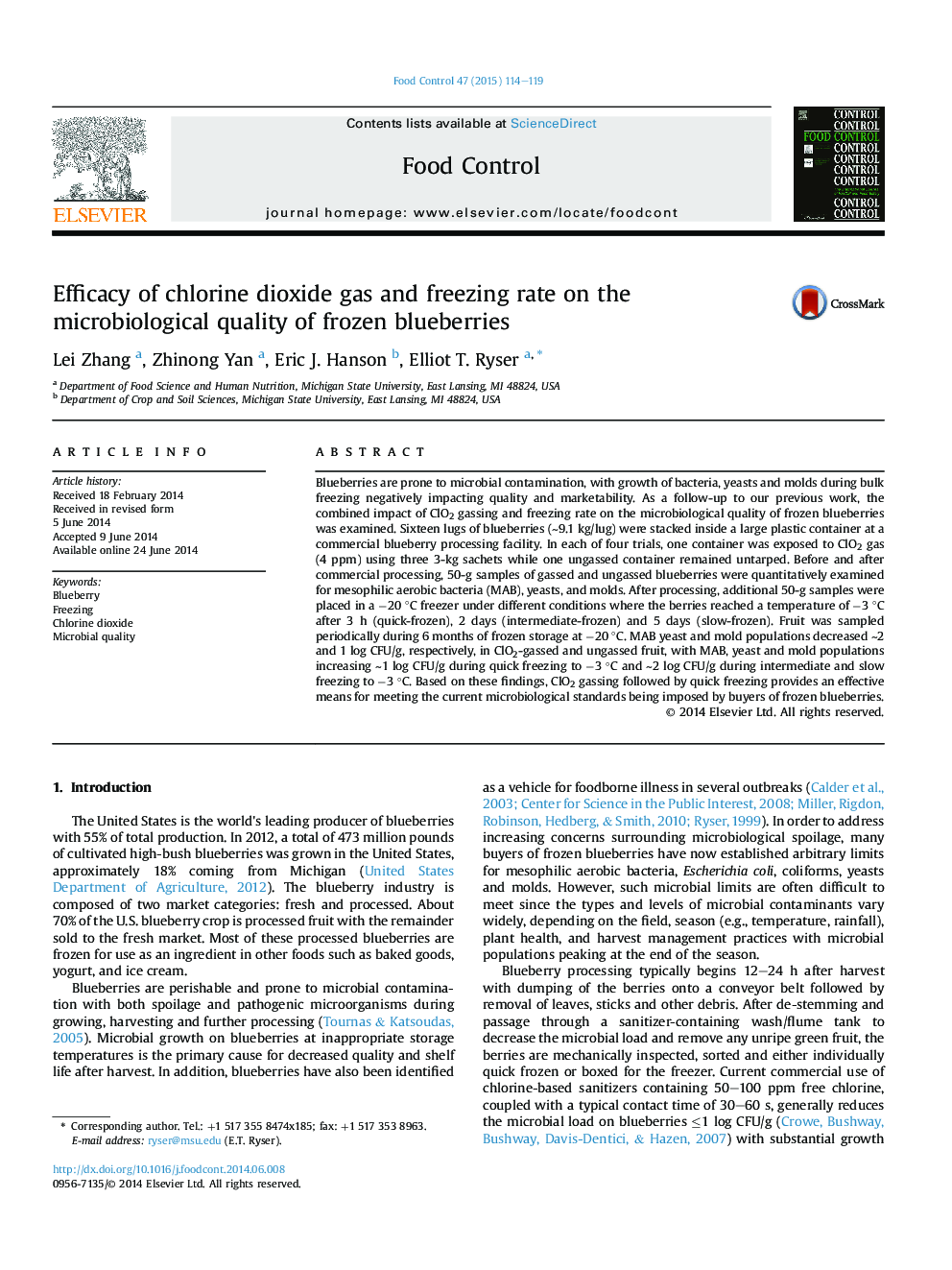| Article ID | Journal | Published Year | Pages | File Type |
|---|---|---|---|---|
| 6391339 | Food Control | 2015 | 6 Pages |
â¢Microbial levels on berries decreased 1-2 logs after chlorine dioxide gassing.â¢Chlorine dioxide plus freezing limited microbial growth in blueberries.â¢Quick freezing decreased the extent of microbial growth.â¢Bacteria and yeast levels decreased during the first 3 months of frozen storage.â¢Mold populations continually declined on blueberries during frozen storage.
Blueberries are prone to microbial contamination, with growth of bacteria, yeasts and molds during bulk freezing negatively impacting quality and marketability. As a follow-up to our previous work, the combined impact of ClO2 gassing and freezing rate on the microbiological quality of frozen blueberries was examined. Sixteen lugs of blueberries (â¼9.1 kg/lug) were stacked inside a large plastic container at a commercial blueberry processing facility. In each of four trials, one container was exposed to ClO2 gas (4 ppm) using three 3-kg sachets while one ungassed container remained untarped. Before and after commercial processing, 50-g samples of gassed and ungassed blueberries were quantitatively examined for mesophilic aerobic bacteria (MAB), yeasts, and molds. After processing, additional 50-g samples were placed in a â20 °C freezer under different conditions where the berries reached a temperature of â3 °C after 3 h (quick-frozen), 2 days (intermediate-frozen) and 5 days (slow-frozen). Fruit was sampled periodically during 6 months of frozen storage at â20 °C. MAB yeast and mold populations decreased â¼2 and 1 log CFU/g, respectively, in ClO2-gassed and ungassed fruit, with MAB, yeast and mold populations increasing â¼1 log CFU/g during quick freezing to â3 °C and â¼2 log CFU/g during intermediate and slow freezing to â3 °C. Based on these findings, ClO2 gassing followed by quick freezing provides an effective means for meeting the current microbiological standards being imposed by buyers of frozen blueberries.
